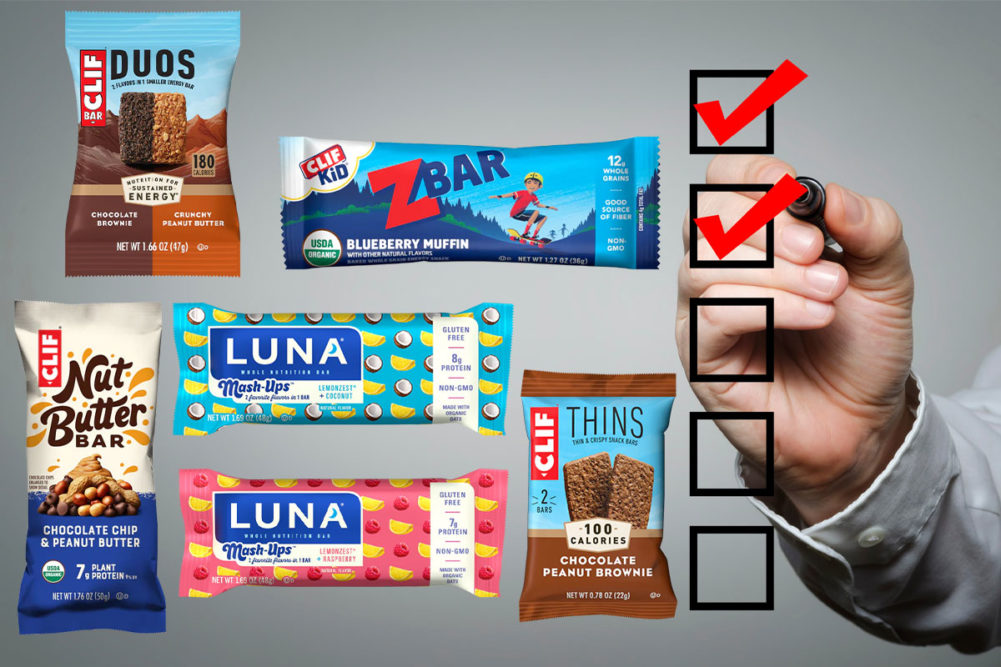CHICAGO – Mondelez International’s acquisition of Clif Bar and Co. checks several boxes in the snack maker’s list of acquisition criteria — it’s snacking focused, offers synergies and value creation, and is a business Mondelez management believes will benefit from the company’s competitive advantages.
“In terms of growth, we see substantial opportunities to increase household penetration and distribution in alternative and e-commerce (channels) as well as existing outlets,” said Dirk Van de Put, chairman and chief executive officer of Mondelez International, during a July 26 conference call to discuss second-quarter results. “There is also an opportunity to unlock growth through revenue growth management and enhanced in-store excellence. And beyond the US, there are clear opportunities to drive international growth.”
Mondelez made public on June 21 its intention to acquire Clif Bar & Co., Emeryville, Calif., for $2.9 billion. Prior to the announcement, Mondelez’s snack bar business generated approximately $300 million in sales. With the addition of Clif Bar the company’s bar business will exceed $1 billion in revenues.
“This gives us an attractive position in a $16 billion market with revenues roughly split between US and international,” Mr. Van de Put said. “We would say that the brand is very strong from our perspective across all age groups. It has organic ingredients. It has a great taste. When we look at the details, we believe that there is a big opportunity to expand distribution in existing and alternative channels, but also improve the quality of the distribution of where Clif is present.”
The bar category experienced a deceleration in sales during the first few years of the pandemic as consumers limited mobility. Mr. Van de Put said the category is recovering and that Clif’s profitability last year is not representative of its potential.
“We have a significant opportunity to optimize overheads, implement a (revenue growth management) strategy,” he said. “They’ve been experiencing supply chain disruption. And we’re already seeing in the first two quarters of this year, a much improved profitability for the business. So, we feel that the business is completely coming back to normal, and then we can add on the many synergies that we see from our side.”
For the second quarter ended June 30, Mondelez International earned $747 million, equal to 54¢ per share on the common stock, and down from the same period the year before when the company earned $1.1 billion, equal to 77¢ per share.
Quarterly sales rose to $7.3 billion from $6.6 billion the year before.
“We delivered gross profit growth of 9.7% due to healthy volume growth and pricing actions,” Mr. Van de Put said.
Items affecting profitability included input cost inflation in energy, transportation, packaging, wheat, dairy and edible oils. To offset the increases, Mondelez is raising prices “across key markets.”
Mr. Van de Put added that while elasticity has risen “slightly” it remains low compared to historical benchmarks.
“Private label is either flat or down in the vast majority of our markets, and shoppers say they are much less likely to switch to private label in chocolate and biscuits compared to other categories,” he said.
An area of positivity for the company is in emerging markets, which have almost recovered to pre-COVID levels.
“Our core category shows solid volume and penetration growth despite price increases,” Mr. Van de Put said. “Compared to developed markets, emerging market consumers are less likely to reduce overall consumption of our categories or switch when faced with price increases.”
Sales in North America rose 9.2% during the quarter, driven by higher pricing in biscuits and double-digit growth in gum and candy.
“Volume/mix was down 1% as a result of continued supply chain constraints,” said Luca Zaramella, chief financial officer.
Mondelez’ net income for the first six months of fiscal 2022 was $1.6 billion, equal to $1.16 per share, and down from the year before when the company earned $2 billion, equal to $1.45 per share.
Sales rose to $15 billion from $13.8 billion the year before.
The company’s strong top-line growth prompted management to raise its organic net revenue growth projection 8%. The revised projection is based on the strength of the first half and higher pricing, according to the company.
“Our EPS outlook of mid- to high single digits is unchanged, and (is) risk adjusted for additional inflation resulting from the Ukraine war, some customer disruption with respect to pricing and higher levels of elasticity,” Mr. Zaramella said. “However, given the strength of our first-half results and depending on the outcome of our pricing negotiations in Europe, we might finish in the upper part of this range.”




